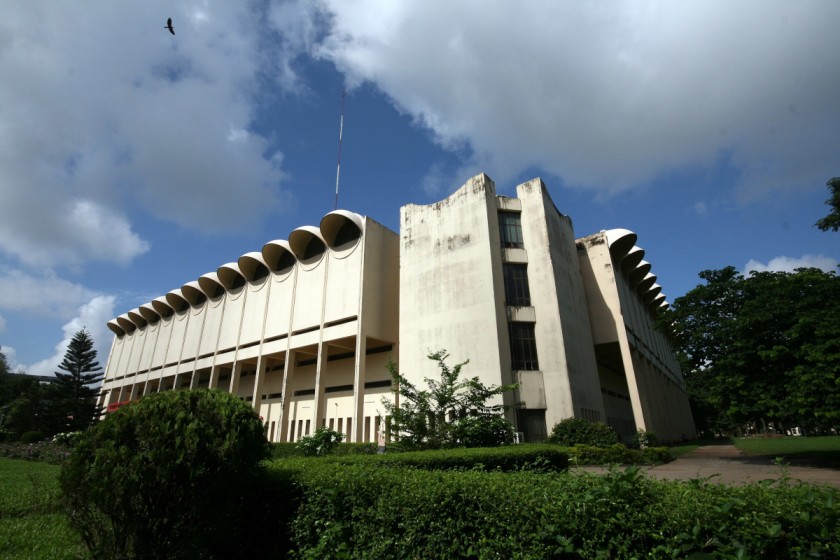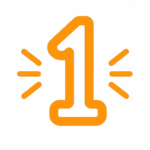The National Museum of Bangladesh, situated in the heart of Shahbag, Dhaka, stands as the country’s largest and most significant repository of history, art, and culture. Housing over 86,000 artifacts, the museum offers a fascinating journey through Bangladesh’s past—from ancient civilizations to the Liberation War of 1971.
This in-depth guide covers everything you need to know about the museum, including its history, key exhibits, visitor information, and tips for an enriching visit. Whether you’re a history buff, a student, or a traveler, this article ensures you make the most of your experience.
Readers Ask Related to National Museum Dhaka
- “National Museum Dhaka ticket price 2024”
- “National Museum Dhaka opening hours”
- “Best things to see in National Museum Dhaka”
- “How to reach National Museum Dhaka?”
- “National Museum Dhaka photos and virtual tour”
- “Liberation War gallery in National Museum”
- “Is photography allowed in National Museum Dhaka?”
- “Guided tours at National Museum Bangladesh”
History of the National Museum Dhaka
Colonial Origins (1913–1947)
The museum was established in 1913 as the “Dhaka Museum” during British rule. Initially, it displayed a small collection of coins, manuscripts, and sculptures from local excavations.

Post-Partition Expansion (1947–1971)
After the partition of India, the museum expanded to preserve the heritage of East Pakistan. It acquired artifacts from archaeological sites like Mahasthangarh and Paharpur.
Post-Independence Era (1971–Present)
Following Bangladesh’s independence, the museum was renamed the “Bangladesh National Museum” and moved to its current four-story building in 1983. Today, it serves as the country’s premier cultural institution.
Architecture and Layout
The museum’s grand structure blends Mughal and modern architectural styles, featuring:
- Spacious galleries with thematic exhibits
- Arched doorways and domes inspired by Mughal design
- Four floors, each dedicated to different historical periods
Floor-by-Floor Breakdown
Ground Floor
- Ethnography & Decorative Art: Traditional nakshi kantha, pottery, and musical instruments.
- Liberation War Gallery: A moving tribute to the 1971 war, featuring weapons, photographs, and personal stories of martyrs.
First Floor
- Ancient & Medieval History: Artifacts from the Maurya, Gupta, Pala, and Sena dynasties.
- Natural History Section: Fossils, animal specimens, and ecological displays.
Second Floor
- Mughal & British Colonial Artifacts: Swords, coins, and miniature paintings.
- Contemporary Art Gallery: Works by Zainul Abedin, SM Sultan, and other masters.
Third Floor
- World Civilizations: Exhibits from Egypt, Greece, China, and Persia.
- Islamic Art Gallery: Rare Qurans, calligraphy, and mosque models.
Must-See Exhibits
1. Indus Valley & Ancient Bengal Collection
- 2500 BCE terracotta artifacts showing trade links with the Harappan civilization.
- Buddhist relics from Paharpur and Mainamati.
2. Mughal Empire Gallery
- Weapons, jewelry, and royal decrees from the Mughal era.
- A replica of the Noakhali Cannon used against Portuguese pirates.
3. Liberation War Section
- Photographs, uniforms, and battlefield memorabilia.
- A reconstructed torture cell used by Pakistani forces.
4. Traditional Crafts & Folk Art
- Nakshi Kantha (embroidered quilts) – A UNESCO-recognized heritage.
- Wooden masks, brassware, and Jamdani textiles.
Visitor Information of National Museum Dhaka
National Museum Dhaka Ticket Price
| Category | Fee (BDT) |
| Bangladeshi Adults | 20 |
| Bangladeshi Students | 10 |
| SAARC Nationals | 100 |
| Foreign Tourists | 500 |
| Free Entry | Children (under 5), disabled visitors, Freedom Fighters |
Opening Hours
- Saturday–Wednesday: 10:30 AM – 5:30 PM (Summer), 9:30 AM – 4:30 PM (Winter)
- Friday: 3:00 PM – 7:30 PM (Year-round)
- Closed: Thursdays & public holidays
How to Reach?
- Location: Shahbag, Dhaka-1000 (near Dhaka University & Ramna Park).
- Public Transport: Buses to Shahbag or TSC stop nearby.
- Ride-Sharing: Uber/Pathao available.
Visitor Tips
✔ Photography allowed (no flash in some galleries).
✔ Guided tours in Bengali & English.
✔ Best time to visit: Weekday mornings (less crowded).
Why Visit the National Museum Dhaka?
- Cultural Preservation – Safeguards Bangladesh’s 4,000-year history.
- Educational Value – Essential for students and researchers.
- Tourist Attraction – Among Dhaka’s top 5 must-visit places.
- Affordable & Accessible – Budget-friendly entry fees.
Frequently Asked Questions About National Museum Dhaka
1. Where is the National Museum located?
The museum sits right in the heart of Dhaka at Shahbag, next to Dhaka University and Bangla Academy. You can’t miss its massive white building.
2. What are the opening hours?
- Summer (April-September): 10:30 AM – 5:30 PM
- Winter (October-March): 9:30 AM – 4:30 PM
- Friday: 3:00 PM – 7:30 PM
- Closed: Thursdays and government holidays
3. How much is the entry ticket?
- Locals: 20 Taka (adults), 10 Taka (students)
- SAARC visitors: 100 Taka
- Foreigners: 500 Taka
- Free for: Kids under 5, disabled visitors, freedom fighters
4. What are the must-see exhibits?
Don’t miss:
- The Liberation War gallery (ground floor)
- Ancient Hindu/Buddhist sculptures (1st floor)
- Mughal-era weapons and jewelry (2nd floor)
- The world civilizations section (3rd floor)
5. Can I take photos inside?
Yes, but:
- No flash photography
- Some galleries prohibit photos (signs will warn you)
- Selfie sticks banned
6. How long does a full visit take?
At least 2 hours if you rush
3-4 hours to properly see everything
Plan extra time if you’re into history
7. Is there a guided tour?
- Free guided tours sometimes available (ask at ticket counter)
- Audio guides: Not currently offered
- Best option: Bring a history student friend!
8. What are the best days/times to visit?
- Weekday mornings = least crowded
- Avoid Friday afternoons (prayer time rush)
- Rainy days = perfect museum weather
9. Is the museum wheelchair accessible?
Partially:
- Elevators available
- Some narrow sections difficult to navigate
- Wheelchair users enter free
10. Are bags allowed inside?
Small bags okay
Large backpacks must be checked
Free locker facility available
11. Where can I eat nearby?
Inside: Small snack bar (basic chips/drinks)
Nearby options:
- Kazi Nazrul Islam Ave restaurants (3 min walk)
- University cafeteria food (cheap and tasty)
12. How to reach by public transport?
- Bus: Any route going to Shahbag/TSC
- Future metro: Shahbag station (coming soon)
- CNG/ride-sharing: Most convenient option
13. What unique items does the museum have?
- Original 1971 Liberation War documents
- 2,500-year-old Indus Valley artifacts
- Royal Mughal farmans (decrees)
- Traditional Nakshi Kantha embroidery
14. Are there English descriptions?
Most major exhibits have English labels
Some smaller items only in Bengali
Guards often speak basic English
15. Can I sketch/draw inside?
Yes with permission
No easels or large drawing boards
Pencils only (no pens/paints)
16. Is there a dress code?
No strict rules but:
- Avoid revealing clothing
- Comfortable shoes recommended
17. What most surprises visitors?
- How massive the collection is
- The quality of ancient artifacts
- The emotional Liberation War section
18. Any special events?
Check for:
- Temporary exhibitions
- Cultural programs on Ekushey February
- Free entry days (rare but happen)
19. Can I buy souvenirs?
Small gift shop sells:
- Postcards
- Books on Bangladeshi history
- Replica artifacts
20. What’s the oldest item in the museum?
Stone tools from 10,000 BCE
Found in various archaeological sites
Local’s Tip:
Start your visit on the top floor and work down – most tourists begin on ground floor so you’ll avoid crowds. The air conditioning also works better upstairs!
Conclusion
The National Museum Dhaka is a treasure trove of Bangladesh’s heritage, offering a captivating glimpse into its past. Whether you’re drawn to ancient relics, Mughal artifacts, or Liberation War history, the museum promises an unforgettable experience.
Plan your visit today and immerse yourself in the rich culture of Bangladesh!
That We Have Covered Here In National Museum Dhaka Article:
- “National Museum Dhaka nearby restaurants”
- “Dhaka Museum vs Bangladesh National Museum”
- “How much time to spend in National Museum Dhaka?”
- “Rare collections in National Museum Bangladesh”
- “Is the National Museum Dhaka worth visiting?”
Thanks for staying with One Light Jounral Bangladesh.
